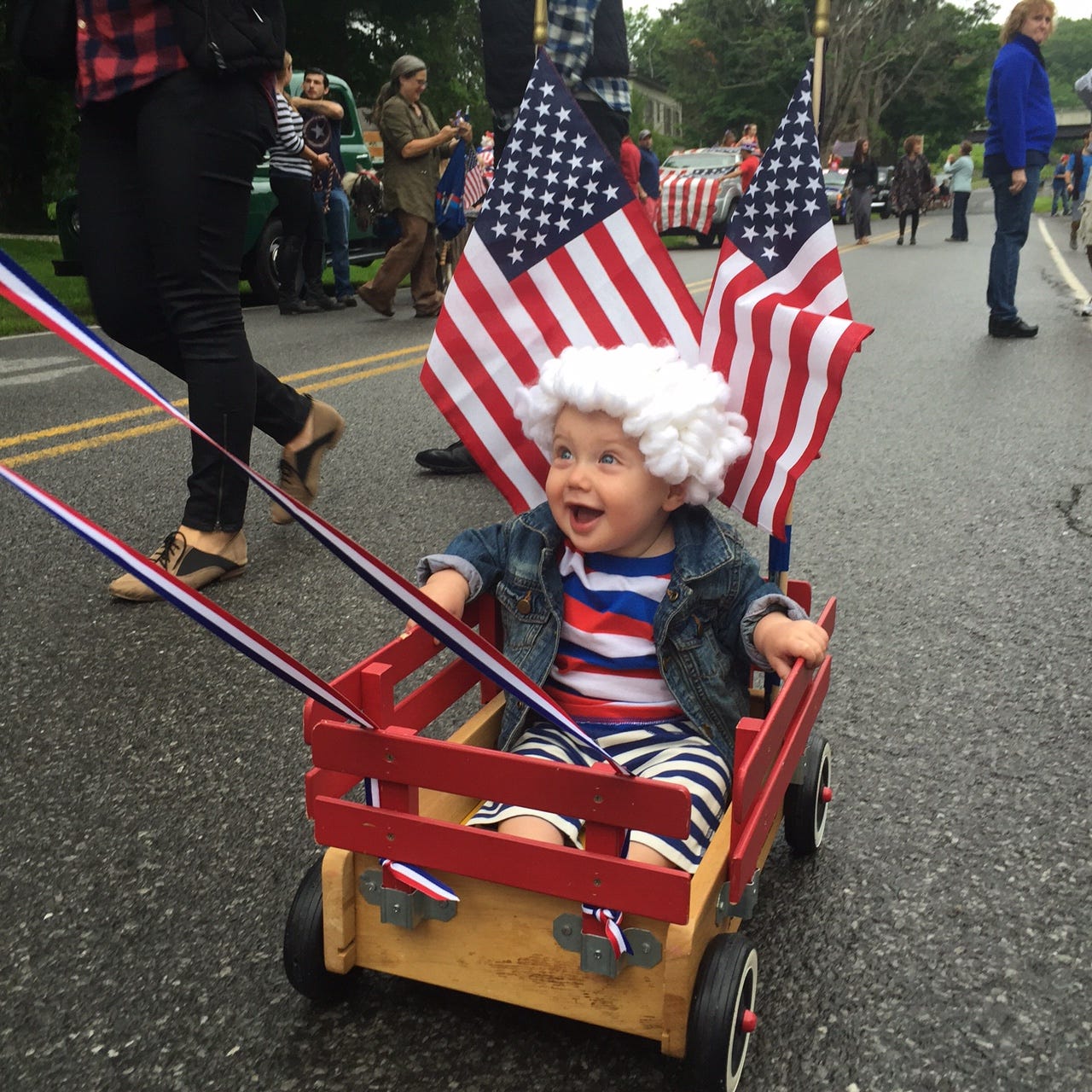Hope
Hank Oransky, embodying American exuberance at the Independence Day parade in Old Chatham, NY.
My little town, Chatham, NY, is an ideal place to celebrate the Fourth of July. Home-made ice cream, food trucks selling fried onion rings, hot dogs, and tacos; fireworks at the fairgrounds and in random backyards; the red-white-and-blue hanging from front porches of white houses with classic black-green trim; tiny flags interplanted with orange daylilies for an explosion of color.
Not to mention the parades.
One of the most moving takes place in the nearby hamlet of Old Chatham, established in 1756. It’s the usual timeless mix of firetrucks, high school marching bands, ancient tractors, and kids waving from jerry-rigged floats as families and neighbors line Main Street to cheer the show. My friends’ then 10 month-old grandson, Hank Oransky, made a big splash when he kicked off the parade a few years ago, as you see above.
Like many small towns, Chatham and the little villages around it have grown more diverse over the last two decades. African Americans, moving in from nearby cities, have been joined by migrants from India, Pakistan, China, Mexico, Guatemala, the Caribbean, and the Philippines. They’re all starting businesses, filling essential jobs, and raising kids, who fill the local schools and then go on to nearby colleges, as people have done throughout our history.
It's a microcosm of the United States’ penchant for inclusion, or what my friend Stanley Crouch used to call the “continuing redefinition of who gets to count as an American.” This redefinition has always stirred backlash– from “no Irish need apply” and covenant clauses banning Jews from certain neighborhoods, to the terror of sundown laws during Jim Crow. But with time, as people get to know one another, things settle down, and divisions that once seemed insurmountable start to mend.
Yet this Fourth of July, our American project of inclusion is in peril. In Chatham and surrounding towns, as well as elsewhere in our county, ICE is active and visible. Local fury is palpable as masked men prowl the streets, as if this were Dodge City, Kansas, in 1883. But this time, there’s no Wyatt Earp on the horizon. No federal marshals coming to rescue a besieged citizenry from outlaw agents of oligarchic power willing to wield violence in their quest for dominance. No opportunity for people get to know neighbors they may have resented or stereotyped when those neighbors fear leaving the house.
Still, the July 4th holiday manifests our desire for unity, even if the circumstances make it a challenge. The parades, the neighborhood barbecues, the pop of fireworks, the ubiquitous flags betray our desire to find the commonalities beneath differences, to show the openheartedness and optimism that have long distinguished our culture. This remains true even as we make our way through startlingly treacherous times, and see the laws that once enlarged our rights and amplified access to commonly-held resources flouted or erased entirely.
On this 4th of July, let us find hope in remembering that our efforts to expand inclusion have continued even through periods of backlash, opposition, and division.
Like what you’re reading? Click here to order my most recent book Rising Together, or How Women Rise. Both are available from Amazon or your favorite bookseller.





